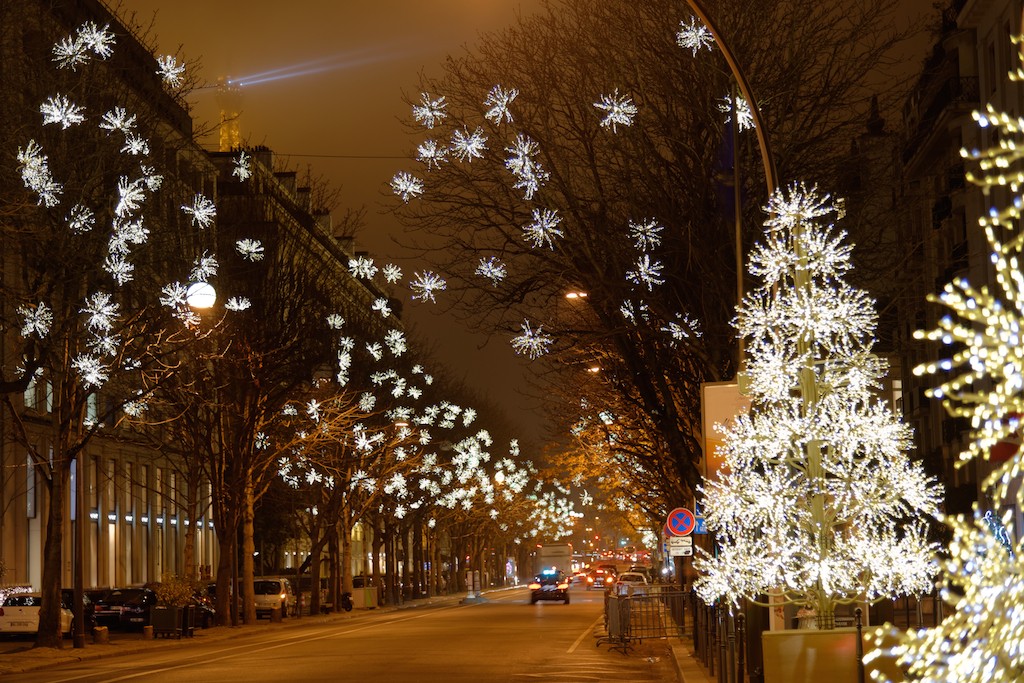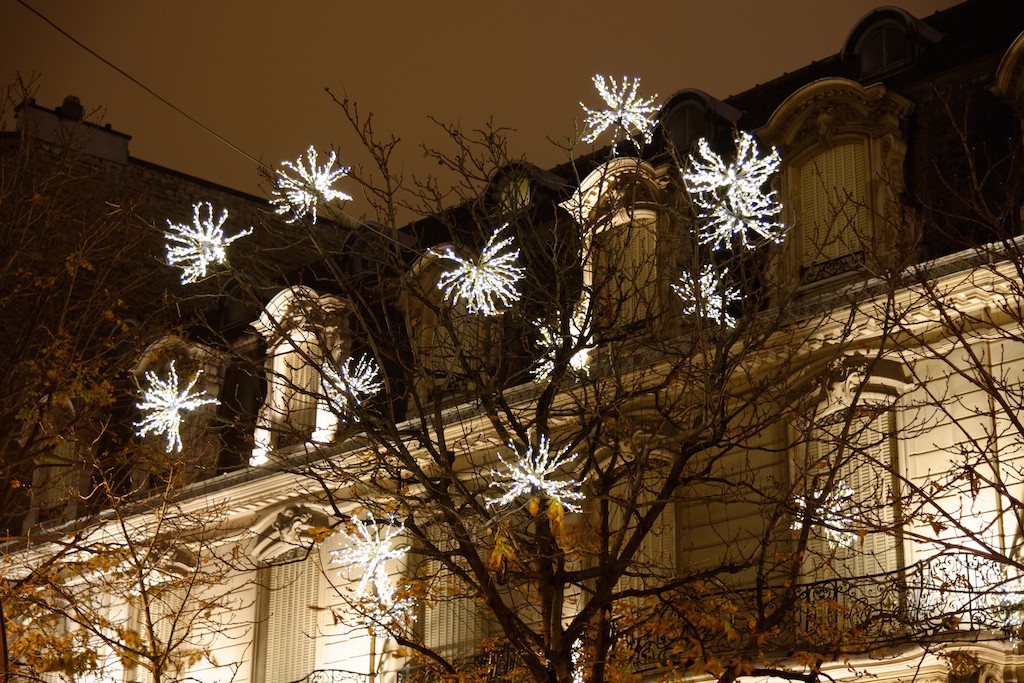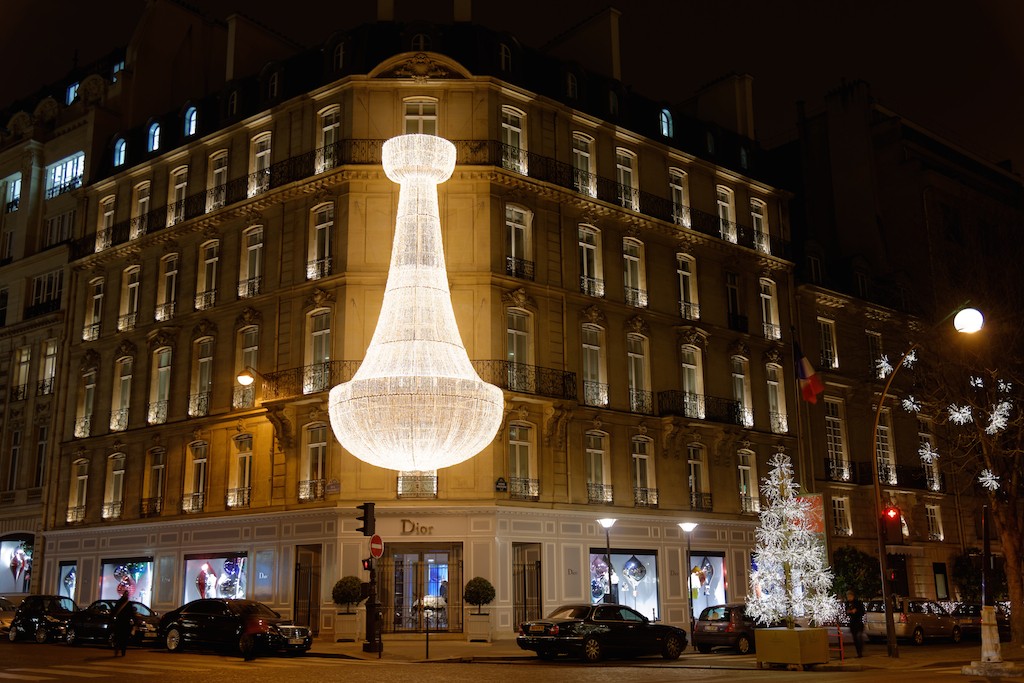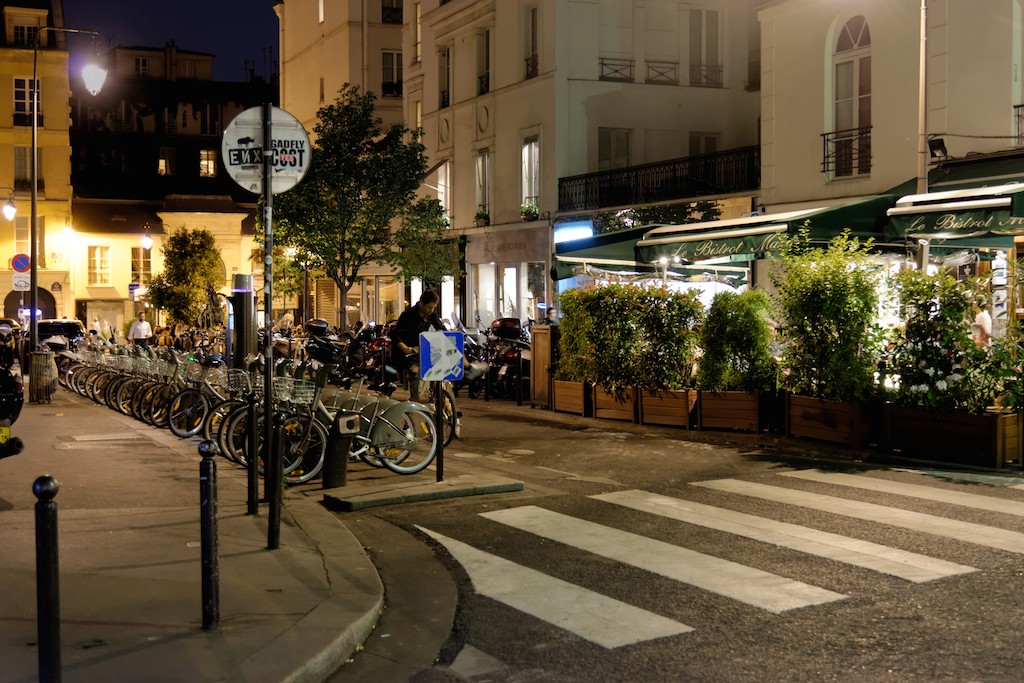Twice a week the Musée du Louvre is opened at night until 9.45pm. Whether you are a tourist in Paris or a Parisian, this is really the opportunity to make the most of your visit and see the masterpieces of the Louvre with very few other visitors!
I went there last Friday around 7.30pm: No queue at all at the Pyramid entrance and, even more surprising, absolutely nobody in front of the admission desk in the main hall.
But before getting down through the Pyramid one could spend hours outside admiring the architecture of the Palace of the Louvre, the elegance of the Pyramid and the views on the Tuileries and beyond at night. The picture below was taken a couple of years ago… however the view is timeless!
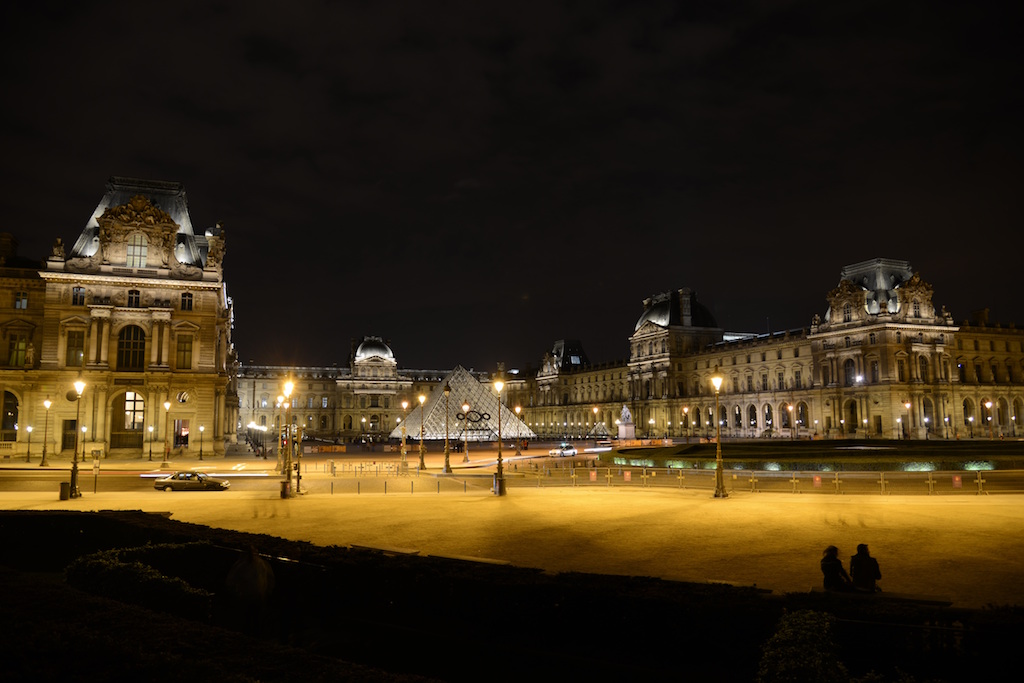
Two minutes later I got my entrance ticket and could start visiting. I had chosen to make the Da Vinci Code trail. This is one of the 28 thematic visitor trails which are offered on the museum website and can be viewed online or printed out prior to a visit, what I highly recommend! The museum is so wide that this is a perfect way to prepare one’s visit so as to avoid getting lost and see what one really wants to see.
The Da Vinci Code trail offers an amusing way to see or see again some of the main rooms of the museum and look at some masterpieces with a fresh eye, providing both a historical and literary perspective. And if one has read the novel or seen the movie, one really gets the impression to follow in Robert Langdon or Sophie Neveu’s footsteps.
The trail is really very well done to better understand the part of reality and the part of fiction included in the Da Vinci Code. I have chosen to illustrate the visit with one picture of each masterpiece proposed as a stop in the trail and a short story about it. Each story is related to the Da Vinci Code and highlights some of the exaggerations of the novel.
Let’s start the visit: Close your eyes and imagine that you are alone in the museum, as Robert Langdon and Sophie Neveu, in dark and empty rooms…
Step 1: The Pyramid
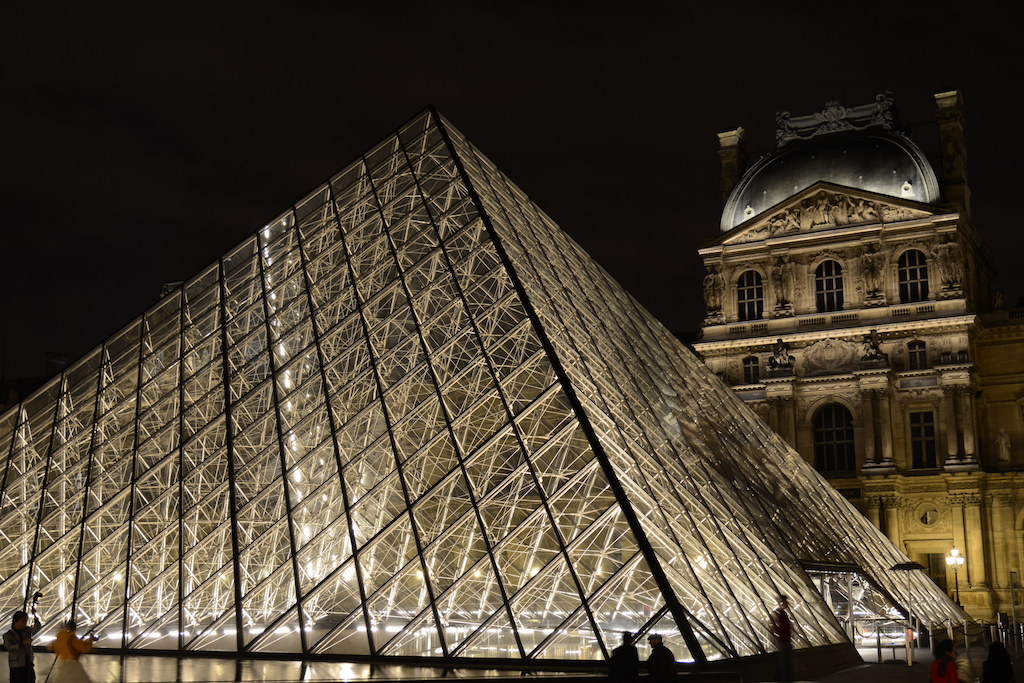
It is made of 673 diamond-shaped and triangular panes of glass, excluding the doors and not 666 as mentioned. The number of 666 was a rumor spread by the opponents to the construction of the Pyramid in the middle of the eighties, as 666 is the number of the Beast in the Book of Revelation.
Step 2: Hera of Samos
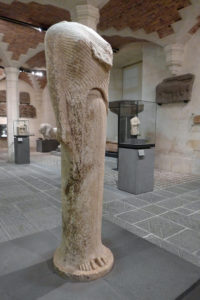
Hera -sister and wife of Zeus- sets an example of the concept of the sacred feminine, which, as this statue demonstrates, was worshipped by the ancient religions.
The sacred feminine and its erasure in the early years of Christianity by undermining the memory of Mary Magdalene is part of the Da Vinci Code.
In the novel the author makes Mary Magdalene the secret companion of Jesus.
Stop 3: The Arago medallion
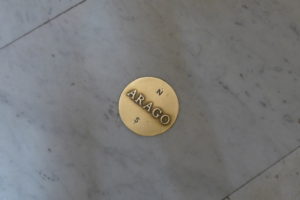
There are 135 Arago medallions in Paris which form a North/South line crossing the capital on the exact path of the old universal meridian of Paris that they commemorate. About fifteen of them are inside or around the Louvre. In the Da Vinci Code the geographical marker of the meridian of Paris is tranformed into an esoteric symbol, the Rose Line.
Stop 4: The Salon Carré
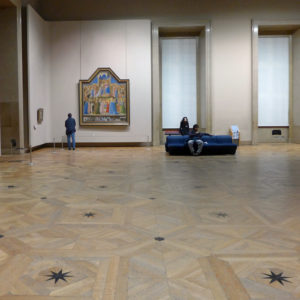
In the novel and in the movie, the curator Jacques Saunière dies in the Grande Galerie and the parquet around his body shows black star-shaped motifs… which are only present in the Louvre in the Salon Carré.
The real topography has been transformed for narrative purposes. There is not such a floor in the Grande Galerie which is the next room.
Step 5: The Virgin of the Rocks
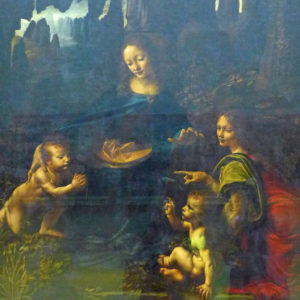
The magnificent Grande Galerie of the Louvre plays a significant role in the Da Vinci Code and is the place where everything starts. It is remarkable for its collection of Italian paintings, including Leonardo da Vinci’s masterpieces. First of them: The Virgin of the Rocks. In the novel a far-fetched interpretation of it is given, transforming the gesture of protection of Mary into a metaphorical representation of murder, suggesting that Mary holds in her left hand the invisible head of Mary Magdalene.
Step 6: Virgin and Child with Saint Anne
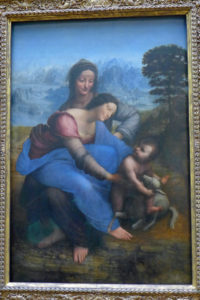
This painting by Leonardo Da Vinci was made famous by the interpretation of Sigmund Freud discerning a vulture in the Virgin Mary’s garment.
It is also mentioned in the Da Vinci Code for its perfect composition based on the use of ‘Phi’, the ‘golden number’. The golden number is said to be a divine proportion and creates in painting or architecture an unparalleled effect of balance and harmony.
Step 7: Noli me Tangere
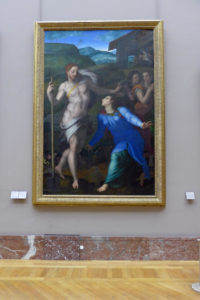
This painting shows that the scandalous impact of the Da Vinci Code, whose plot is based on the idea of a secret union between Jesus and Mary Magdalene, might have had precedents in the artists’ imagination!
As one can see the positions of both Jesus and Mary Magdalene are rather ambiguous and can be interpreted in an erotic way.
Step 8: The Death of the Virgin
This painting by Caravage is said to contain a scotoma, which is a detail that one doesn’t notice first but becomes obvious when one knows the story of the work. The large red drape on top of the painting whose colour is the same as the one of the dead Virgin’s dress could symbolize the body of Mary rising to her Son during the Assumption.
Before reaching the Death of the Virgin one will admire (even if not in the Da Vinci Code trail!) another work of Caravage which is in my opinion one of the most amazing paintings in the Grande Galerie: the Fortune Teller. So beautiful!
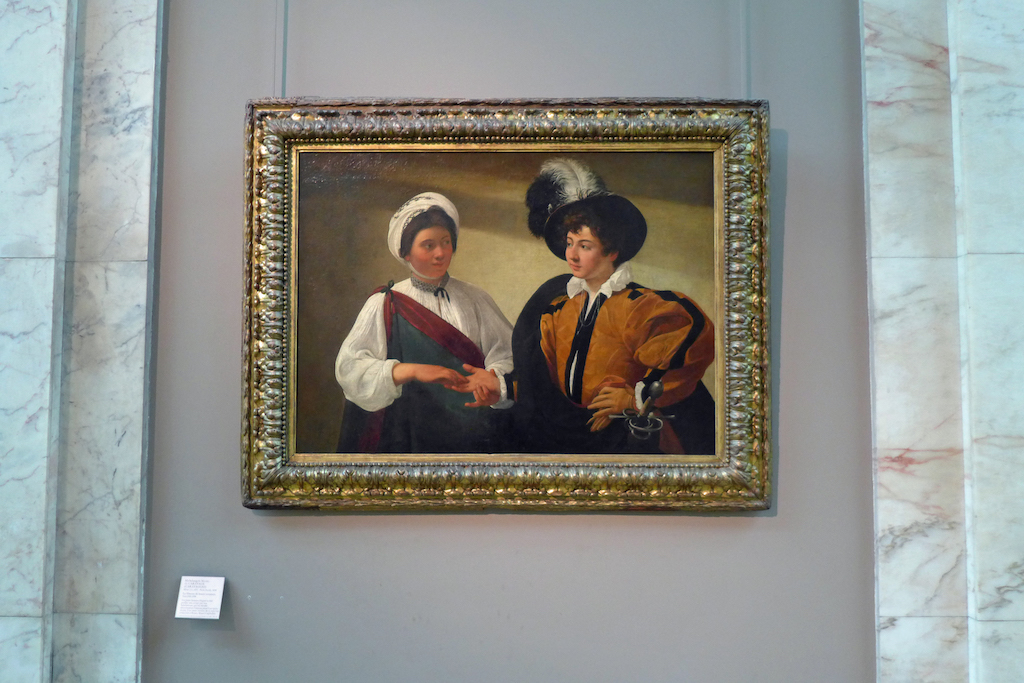
Step 9: The Wedding Feast at Cana
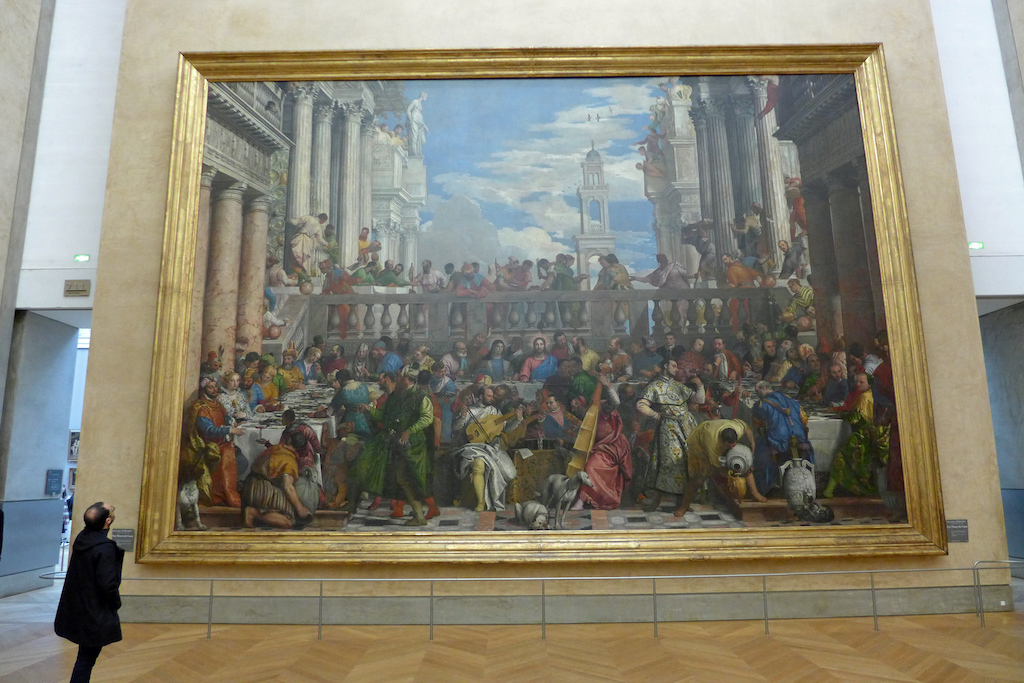
The masterpiece by Véronèse is the largest painting in the Louvre and a work with some surprising details that have raised many questions giving rise to various interpretations. For instance why does the Virgin Mary seem to be holding an invisible glass in her left hand?…
Step 10: Mona Lisa
During the day it is almost impossible to reach the first line of visitors admiring the famous Mona Lisa. One of the great moments of my visit during the night opening was to be able to stand as close as possible to Mona Lisa that the safety device allows and to stay there as long as I wanted to. The painting has always aroused fantasies; many of them are of course taken up by the Da Vinci Code.
Step 11: The Red Rooms
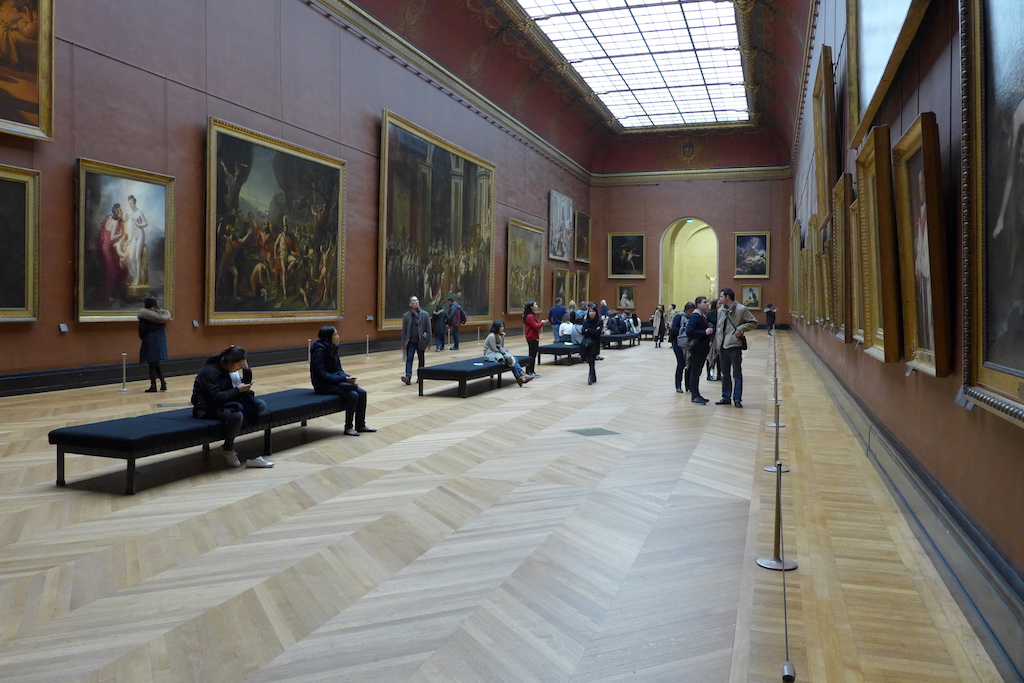
The opening of the movie sets in the red rooms, showing the curator Jacques Saunière running through them. The decor of those three rooms, where the masterpieces from French painters such as David or Delacroix are exhibited, offers a magnificent and spectacular explosion of colour.
Step 12: The Inverted Pyramid
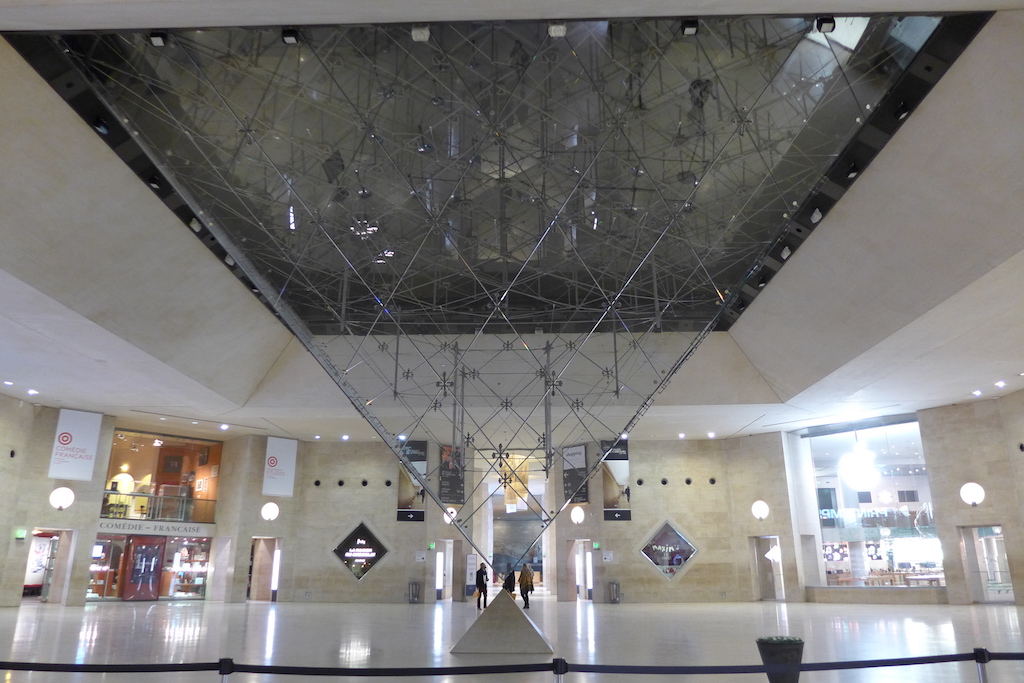
The trail suggests to leave the museum through the gallery leading to the shops of the Carrousel du Louvre. Not to shop -especially at 9.30pm as they are closed!- but to see the Inverted Pyramid, which is the place where the Da Vinci Code ends. Remember: Richard Langdon understands there that the pyramidion of stone placed under the Inverted Pyramid houses the grave of Mary Magdalene. This purely fictional revelation has made the Inverted Pyramid famous!
I hope that you have enjoyed this original trail through the Louvre. Whether you choose this one or any other among the 28 thematic trails proposed by the museum, depending on your taste and mood, I really recommend you to plan your visit during one of the two night openings, either on Wednesday or on Fridays, starting it around 7.30pm. The visiting conditions for the largest and most visited museum in the world are then simply exceptional!
Christine Bokobza – Good Morning Paris The Blog
Practical information: Musée du Louvre – Métro Palais Royal Musée du Louvre (lines 1, 7) – Open every day except Tuesday: 9am-6pm – Night Opening on Wednesday and Friday until 9.45pm




